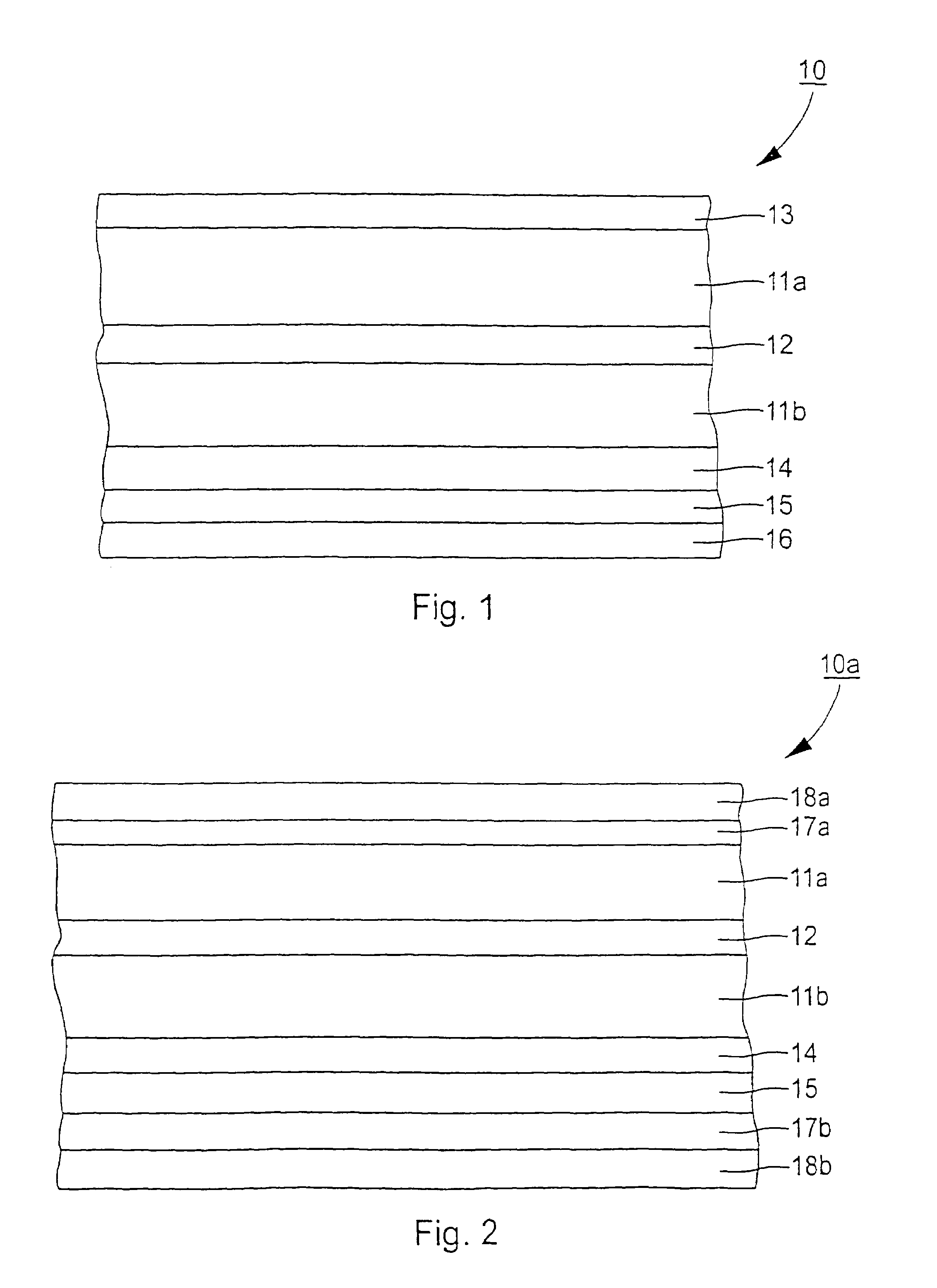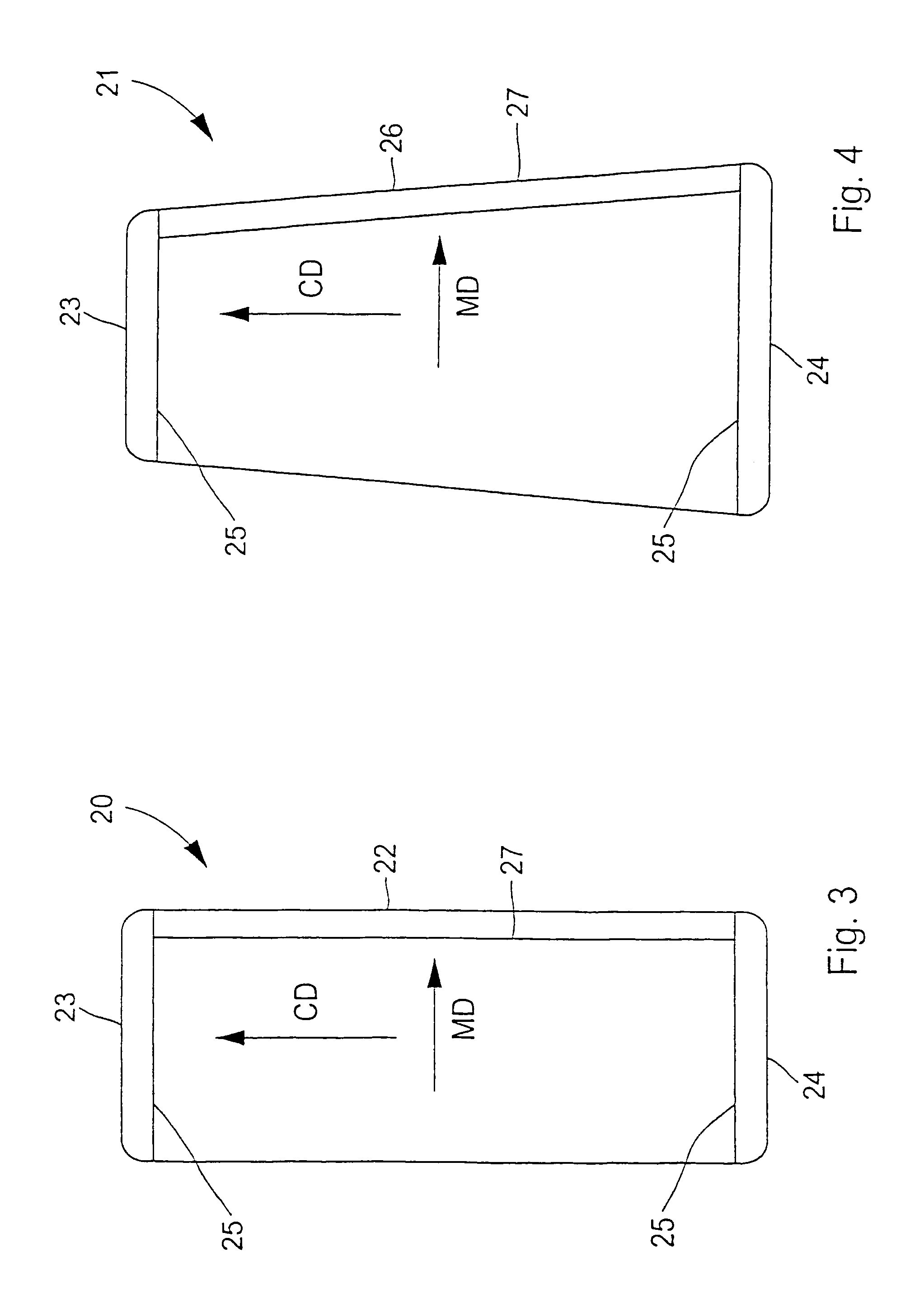Packaging container packaging laminate and a method of producing a packaging container
a packaging container and packaging laminate technology, applied in the field of packaging containers, can solve the problems of increasing the length of the container, affecting the economic benefits of manufacturing, and naturally occurring strains, etc., and achieve the effect of economics of manufacturing
- Summary
- Abstract
- Description
- Claims
- Application Information
AI Technical Summary
Benefits of technology
Problems solved by technology
Method used
Image
Examples
Embodiment Construction
[0031]FIG. 5 shows a reference curve of expansion against time for a non pre-strained Kraft paper consisting of two layers of 145 g / m2 each, the Kraft paper being subjected to a loading in the transverse direction of 27.1 kNm / kg at 80% relative humidity. After roughly 10 minutes, the paper had been stretched in the transverse direction an average of around 4.5%. (The different curves show the results from several different experiments under the same conditions.)
[0032]FIGS. 6–9 show curves for corresponding experiments carried out on the same type of Kraft paper which had been pre-strained by 1, 2, 3 and 4%, respectively, prior to the experiments. It may be read off from the curves that the stretching of the material on loading reduces in relation to the degree of pre-straining. At 4% pre-straining, the paper had been stretched in the transverse direction, after roughly 10 minutes' loading of 27.1 kNm / kg at 80% relative humidity by an average of about 3.2%.
[0033]The present invention...
PUM
| Property | Measurement | Unit |
|---|---|---|
| pressure | aaaaa | aaaaa |
| pressure | aaaaa | aaaaa |
| pressure | aaaaa | aaaaa |
Abstract
Description
Claims
Application Information
 Login to View More
Login to View More - R&D
- Intellectual Property
- Life Sciences
- Materials
- Tech Scout
- Unparalleled Data Quality
- Higher Quality Content
- 60% Fewer Hallucinations
Browse by: Latest US Patents, China's latest patents, Technical Efficacy Thesaurus, Application Domain, Technology Topic, Popular Technical Reports.
© 2025 PatSnap. All rights reserved.Legal|Privacy policy|Modern Slavery Act Transparency Statement|Sitemap|About US| Contact US: help@patsnap.com



